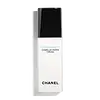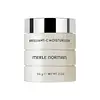What's inside
What's inside
 Key Ingredients
Key Ingredients

 Benefits
Benefits

 Concerns
Concerns

 Ingredients Side-by-side
Ingredients Side-by-side

Water
Skin ConditioningCamellia Japonica Flower Water
Skin ConditioningSqualane
EmollientGlycerin
HumectantAlcohol
AntimicrobialLauroyl Lysine
Skin ConditioningPropanediol
SolventCanola Oil
EmollientPentylene Glycol
Skin ConditioningDimethicone
EmollientZingiber Officinale Root Extract
MaskingCamellia Japonica Flower Extract
EmollientPEG-60 Glyceryl Isostearate
Ammonium Acryloyldimethyltaurate/Vp Copolymer
Dimethicone Crosspolymer
Emulsion StabilisingParfum
MaskingCaprylyl Glycol
EmollientSodium Acrylates/C10-30 Alkyl Acrylate Crosspolymer
Silica
AbrasiveArginine
MaskingDipropylene Glycol
HumectantPhenoxyethanol
PreservativePolyquaternium-51
Skin ConditioningSodium Hyaluronate
HumectantTocopheryl Acetate
AntioxidantPhytic Acid
Ascorbyl Glucoside
AntioxidantSodium Citrate
BufferingSodium Benzoate
MaskingCitric Acid
BufferingCI 77891
Cosmetic ColorantMica
Cosmetic ColorantWater, Camellia Japonica Flower Water, Squalane, Glycerin, Alcohol, Lauroyl Lysine, Propanediol, Canola Oil, Pentylene Glycol, Dimethicone, Zingiber Officinale Root Extract, Camellia Japonica Flower Extract, PEG-60 Glyceryl Isostearate, Ammonium Acryloyldimethyltaurate/Vp Copolymer, Dimethicone Crosspolymer, Parfum, Caprylyl Glycol, Sodium Acrylates/C10-30 Alkyl Acrylate Crosspolymer, Silica, Arginine, Dipropylene Glycol, Phenoxyethanol, Polyquaternium-51, Sodium Hyaluronate, Tocopheryl Acetate, Phytic Acid, Ascorbyl Glucoside, Sodium Citrate, Sodium Benzoate, Citric Acid, CI 77891, Mica
Water
Skin ConditioningHydrogenated Polydecene
EmollientAlcohol Denat.
AntimicrobialGlycerin
HumectantDipropylene Glycol
HumectantCetyl PEG/PPG-10/1 Dimethicone
EmulsifyingButylene Glycol
HumectantAscorbyl Glucoside
AntioxidantTocopheryl Acetate
AntioxidantHydrolyzed Soy Protein
HumectantGlycyrrhiza Glabra Root Extract
BleachingMorus Bombycis Root Extract
Skin ConditioningScutellaria Baicalensis Root Extract
AstringentSaxifraga Sarmentosa Extract
Skin ConditioningVitis Vinifera Fruit Extract
Skin ConditioningCucumis Sativus Fruit Extract
EmollientCamellia Sinensis Leaf Extract
AntimicrobialSodium Hyaluronate
HumectantLecithin
EmollientHydrogenated Polyisobutene
EmollientDimethicone
EmollientPetrolatum
EmollientPolymethylsilsesquioxane
PEG-20
HumectantPEG-150
HumectantPalmitoyl Hydroxypropyltrimonium Amylopectin/Glycerin Crosspolymer
Skin ConditioningPropylene Glycol
HumectantDisodium EDTA
Citric Acid
BufferingSodium Chloride
MaskingPotassium Hydroxide
BufferingSodium Citrate
BufferingPhenoxyethanol
PreservativeMethylparaben
PreservativePropylparaben
PreservativeMica
Cosmetic ColorantCI 77891
Cosmetic ColorantWater, Hydrogenated Polydecene, Alcohol Denat., Glycerin, Dipropylene Glycol, Cetyl PEG/PPG-10/1 Dimethicone, Butylene Glycol, Ascorbyl Glucoside, Tocopheryl Acetate, Hydrolyzed Soy Protein, Glycyrrhiza Glabra Root Extract, Morus Bombycis Root Extract, Scutellaria Baicalensis Root Extract, Saxifraga Sarmentosa Extract, Vitis Vinifera Fruit Extract, Cucumis Sativus Fruit Extract, Camellia Sinensis Leaf Extract, Sodium Hyaluronate, Lecithin, Hydrogenated Polyisobutene, Dimethicone, Petrolatum, Polymethylsilsesquioxane, PEG-20, PEG-150, Palmitoyl Hydroxypropyltrimonium Amylopectin/Glycerin Crosspolymer, Propylene Glycol, Disodium EDTA, Citric Acid, Sodium Chloride, Potassium Hydroxide, Sodium Citrate, Phenoxyethanol, Methylparaben, Propylparaben, Mica, CI 77891
 Reviews
Reviews

Ingredients Explained
These ingredients are found in both products.
Ingredients higher up in an ingredient list are typically present in a larger amount.
Ascorbyl Glucoside is a stable form of Vitamin C. It is created by combining glucose from starch.
When applied to skin, Ascorbyl Glucoside turns into Ascorbic Acid.
Ascorbyl Glucoside is an antioxidant. Antioxidants help fight free-radicals, or molecules that may damage skin cells.
It can help to reduce redness, improve skin texture, reduce the effects of aging, reduce the visibility of dark spots, and brighten skin.
Read more about other types of Vitamin C:
Learn more about Ascorbyl GlucosideCi 77891 is a white pigment from Titanium dioxide. It is naturally found in minerals such as rutile and ilmenite.
It's main function is to add a white color to cosmetics. It can also be mixed with other colors to create different shades.
Ci 77891 is commonly found in sunscreens due to its ability to block UV rays.
Learn more about CI 77891Citric Acid is an alpha hydroxy acid (AHA) naturally found in citrus fruits like oranges, lemons, and limes.
Like other AHAs, citric acid can exfoliate skin by breaking down the bonds that hold dead skin cells together. This helps reveal smoother and brighter skin underneath.
However, this exfoliating effect only happens at high concentrations (20%) which can be hard to find in cosmetic products.
Due to this, citric acid is usually included in small amounts as a pH adjuster. This helps keep products slightly more acidic and compatible with skin's natural pH.
In skincare formulas, citric acid can:
While it can provide some skin benefits, research shows lactic acid and glycolic acid are generally more effective and less irritating exfoliants.
Most citric acid used in skincare today is made by fermenting sugars (usually from molasses). This synthetic version is identical to the natural citrus form but easier to stabilize and use in formulations.
Read more about some other popular AHA's here:
Learn more about Citric AcidDimethicone is a type of synthetic silicone created from natural materials such as quartz.
What it does:
Dimethicone comes in different viscosities:
Depending on the viscosity, dimethicone has different properties.
Ingredients lists don't always show which type is used, so we recommend reaching out to the brand if you have questions about the viscosity.
This ingredient is unlikely to cause irritation because it does not get absorbed into skin. However, people with silicone allergies should be careful about using this ingredient.
Note: Dimethicone may contribute to pilling. This is because it is not oil or water soluble, so pilling may occur when layered with products. When mixed with heavy oils in a formula, the outcome is also quite greasy.
Learn more about DimethiconeDipropylene Glycol is a synthetically created humectant, stabilizer, and solvent.
This ingredient helps:
Dipropylene glycol is technically an alcohol, but it belongs to the glycol family (often considered part of the ‘good’ alcohols). This means it is hydrating and gentle on skin unlike drying solvent alcohols like denatured alcohol.
As a masking agent, Dipropylene Glycol can be used to cover the smell of other ingredients. However, it does not have a scent.
Studies show Dipropylene Glycol is considered safe to use in skincare.
Learn more about Dipropylene GlycolGlycerin is already naturally found in your skin. It helps moisturize and protect your skin.
A study from 2016 found glycerin to be more effective as a humectant than AHAs and hyaluronic acid.
As a humectant, it helps the skin stay hydrated by pulling moisture to your skin. The low molecular weight of glycerin allows it to pull moisture into the deeper layers of your skin.
Hydrated skin improves your skin barrier; Your skin barrier helps protect against irritants and bacteria.
Glycerin has also been found to have antimicrobial and antiviral properties. Due to these properties, glycerin is often used in wound and burn treatments.
In cosmetics, glycerin is usually derived from plants such as soybean or palm. However, it can also be sourced from animals, such as tallow or animal fat.
This ingredient is organic, colorless, odorless, and non-toxic.
Glycerin is the name for this ingredient in American English. British English uses Glycerol/Glycerine.
Learn more about GlycerinMica is a naturally occurring mineral used to add shimmer and color in cosmetics. It can also help improve the texture of a product or give it an opaque, white/silver color.
Serecite is the name for very fine but ragged grains of mica.
This ingredient is often coated with metal oxides like titanium dioxide. Trace amounts of heavy metals may be found in mica, but these metals are not harmful in our personal products.
Mica has been used since prehistoric times throughout the world. Ancient Egyptian, Indian, Greek, Roman, Aztec, and Chinese civilizations have used mica.
Learn more about MicaPhenoxyethanol is a preservative that has germicide, antimicrobial, and aromatic properties. Studies show that phenoxyethanol can prevent microbial growth. By itself, it has a scent that is similar to that of a rose.
It's often used in formulations along with Caprylyl Glycol to preserve the shelf life of products.
Sodium Citrate is the sodium salts of citric acid. In skincare, it is used to alter pH levels and acts as a preservative.
Its main functions are to maintain the pH of a product and neutralize metal ions.
The acidity of our skin is maintained by our glands and skin biome; normal pH level of skin is slightly acidic (~4.75-5.5).
Being slightly acidic allows our skin to create an "acid mantle". This acid mantle is a thin barrier that protects our skin from bacteria and contaminants.
Learn more about Sodium CitrateSodium Hyaluronate is hyaluronic acid's salt form. It is commonly derived from the sodium salt of hyaluronic acid.
Like hyaluronic acid, it is great at holding water and acts as a humectant. This makes it a great skin hydrating ingredient.
Sodium Hyaluronate is naturally occurring in our bodies and is mostly found in eye fluid and joints.
These are some other common types of Hyaluronic Acid:
Learn more about Sodium HyaluronateTocopheryl Acetate is AKA Vitamin E. It is an antioxidant and protects your skin from free radicals. Free radicals damage the skin by breaking down collagen.
One study found using Tocopheryl Acetate with Vitamin C decreased the number of sunburned cells.
Tocopheryl Acetate is commonly found in both skincare and dietary supplements.
Learn more about Tocopheryl AcetateWater. It's the most common cosmetic ingredient of all. You'll usually see it at the top of ingredient lists, meaning that it makes up the largest part of the product.
So why is it so popular? Water most often acts as a solvent - this means that it helps dissolve other ingredients into the formulation.
You'll also recognize water as that liquid we all need to stay alive. If you see this, drink a glass of water. Stay hydrated!
Learn more about Water